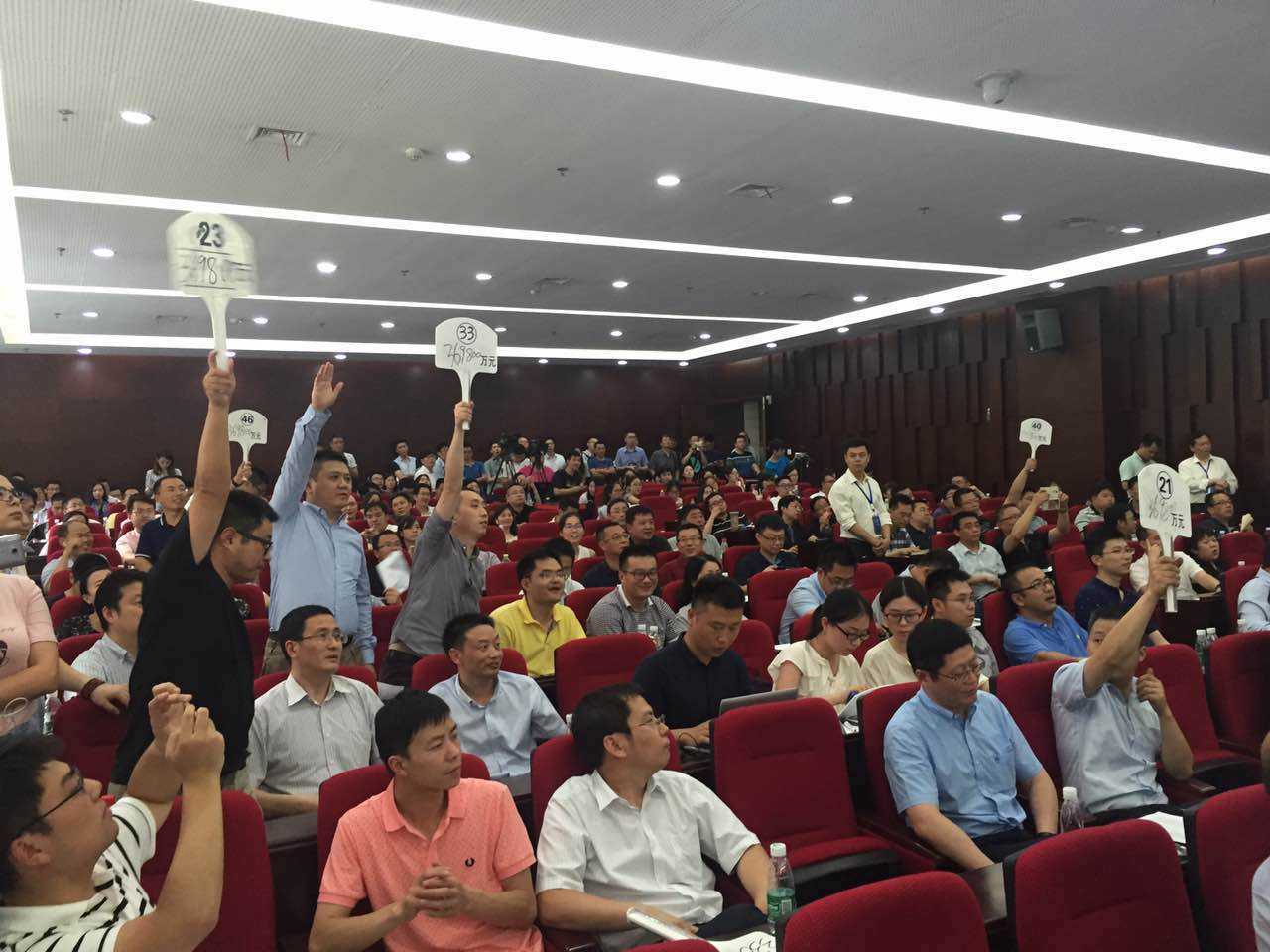The issues affecting China’s real estate industry are undoubtedly serious, and they have the potential to impact the entire economy. In many cities, the rapid rise in housing prices has contributed to the growing wealth gap and made it harder for young people to resettle in Tier I cities, where there are more opportunities. The housing rental market has also been following a wave of volatility, from the recent decline in rents in Shanghai.
At the same time, the high supply of real estate in smaller cities has become one of the main risks to the system. Many financial institutions and local governments are "tied up" in the real estate industry, further complicating matters.

To some extent, China’s ability to continue growing the economy and prevent the wealth gap from becoming worse depends largely on whether it can properly solve its real estate problems. For many analysts, the crux of the market’s issues is not that it’s a bubble; they believe that there is a mismatch between supply and demand.
In an ideal market, supply responds to demand, but in areas across China supply and demand appear to be only loosely correlated. In some cities, demand far outpaces supply, causing housing prices to shoot up. And, in other cities, supply is greater than demand, causing stock to accumulate. Therefore, the Chinese housing market overall has both high prices and an excess of stock.
Demand is being driven by three main aspects: rapid urbanization, social benefits, and real estate investments.
Rapid urbanization is occurring as young Chinese people pour into Tier I and Tier II cities, looking for opportunities and a higher quality of life. There are many factors that link the scale of migration with housing prices, but one factor that stands out is primary school enrollment levels. According to Shanghai’s household registry, the local population has been aging, with over 4 million residents being over the age of 60. By this measure, the number of young students should also have begun to decline. But as Shanghai continues to attract young workers, the number of school-aged children has actually risen by 50% over the past 10 years. This inflow has also sparked a rise in housing prices.
Second, there are social benefits that come along with having Tier I city-based housing. According to a World Report on the United States’ best hospitals, the Mayo Clinic, which is located in a small city in Minnesota, is ranked first. The second highest rated hospital is the Cleveland clinic in Ohio. But China’s highest quality medical resources are almost always concentrated in China’s first tier cities. So, even as prices escalate, residents would prefer to stay in these cities rather than move to smaller cities with a lower cost of living. Educational resources are also connected to home ownership and district zoning, which has led to a high demand for houses around elite schools.

Third, homes are seen as a key financial investment. For ordinary people, the number of investment channels are limited, so real estate has become the main form of investment. For many families, particularly amongst those who were ‘early bird’ buyers, real estate investments have already generated a great deal of wealth. For many people, the housing market continues to be a ‘sure bet’, but due to skyrocketing prices, latecomers have struggled to get in.
The demand for housing in China is driven by both economic and social psychological factors. Studies have found that even overseas, the proportion of Chinese-owned real estate is higher than that of local people. High demand does not necessarily mean that prices must also rise. But in China’s largest cities, the supply cannot meet demand, and thus prices rise.
For more information about Shanghai apartment renting, please follow our website.
In most markets, supply is flexible and it’s able to meet demand. However, due to China’s unique land system, there is a serious mismatch between supply and demand, which leads to the unusual coexistence of high housing prices and excess supply.
First, the supply of land in large cities is quite limited. Although Shanghai is about 6,300 square kilometers, the land that has been designated for urban housing accounts for only 10-15%. The only other city with such a serious lack of supply is Hong Kong, where only 4% of land is used for urban residential development. Not surprisingly, more than half of the price of a new house in Shanghai, Beijing, or Hong Kong is from the land itself.

Second, on top of land use restrictions, there are financial considerations. In Shanghai, for example, there is still 1,800 square kilometers of cultivated land. For the sake of economic and tax considerations, the government tends to sell industrial and commercial land at a low price. Even as demand lags behind in those sectors, the buildings cannot legally be converted for residential use. They simply remain idle until they are eventually purchased and converted for commercial use.
Third, the rate of expansion of residential land is not high. In Beijing and Shanghai, the average growth rate of residential land over the past five years was just two. Professor Zhou Lian of Peking University and his team have found that the faster the population grows, the lower the growth rate. It’s obvious that the population is expanding, but the supply of new land is tightening. This further exacerbates the situation.
On the other side of the scale, there is the case of oversupply. Many small and medium-sized cities have experienced only mild population growth, with some even seeing an outflow of people. In these cities the local government has supplied too much land, resulting in excess supply. Part of this stems from the fact that revenue in these areas is more dependent on the land. In larger cities there are more tax sources, so dependence on the real estate industry is limited. In Shenzhen, for example, land-based income accounts for less than 10% of fiscal revenue. Policymakers are also attempting to both encourage development in smaller cities, whilst also limiting it in bigger cities.
In the future, the further development of smaller cities may help to stem demand in Tier I cities. A recent shift amongst younger buyers towards renting should also help ease the situation. However, if the supply of land continues to be strictly limited, there will continue to be a distortional gap between supply and demand.
But some market observers do not believe that the problem lies with the mismatch between supply and demand at all. They believe that a housing bubble or the currency supply is to blame.
The bubble theory cannot fully explain the coexistence of high housing prices and excess stock. Housing prices in Tier I and Tier II cities relative to local incomes are indeed quite high. However, in most third- or fourth-tier cities, this is not the case. The housing bubble theory can only explain the situation in some areas, but it does not fully account for the whole of China’s housing market.

And even if housing prices are far higher than the average level of income, this does not mean that the market will continue this way. At present, housing prices are 32 times the average household income. In Tokyo housing prices are 23 times the average income. Although Shanghai’s housing bubble appears to be bigger than Tokyo’s, unequal rates of income growth may result in housing prices in both of these cities being about 18 times the average annual income. In the same way, the future rate of interest and inflation will also have an important impact on the sustainability of housing prices. It’s worth remembering that the government has strong regulatory abilities in this market, as well as the credit market. Risky financial investments, such as mortgage derivatives, are nearly nonexistent in the Chinese marketplace.
Potential buyers may think that the housing market is a bubble, and the news is always warning that bubble is on the verge of popping. But when, in that case, should investors enter or exit the market? The ability of this theory to fully explain all the factors and provide an accurate prediction is limited. And anyways, for many market insiders, if there is a bubble, it’s more of ‘hard foam bubble’ that is unlikely to truly pop and cause the kind of doomsday apocalypse that so many are expecting.
If policy makers do believe that the state of the housing market is due to a bubble, the best way to curb demand is by limiting purchases. In addition, they may also use regulatory measures to control housing prices and expand or contract the housing supply as needed. Urbanization-driven demand may, however, be one factor that is difficult to control.
More and more people are pointing to an excess of money circulating the marketplace as the cause of high housing prices. This theory is not unreasonable. The rise of housing prices is indeed correlated with the expansion of the money supply. However, this monetary perspective fails to account for some key factors.
This theory does not explain the mutual coexistence of high prices and excess supply. In other words, how is it that the currency is flowing only to small portion of the country, and not to the rest of the cities? Further weakening this argument is the issue of inflation. Inflation in China is not high, and in fact, the country has even been recording deflation. So, why does currency flow to the property market, and not to other commodity markets?
In 2011, many people began using this money theory to explain the price of commodities, believing that the price of commodities would continue to rise. But in the five years that followed, the price of certain steel goods dropped by 70%, even as the currency supply expanded. And, even as the price of those steel goods have risen 130% since early 2016, the currency supply growth rate has dropped from just 13% to 9%. In fact many commodities have seen a rapid uptick in prices. The rapid uptick in the price of garlic, for example, has been described as “ruthless”.

Real estate and the currency supply have more of a reciprocal cause and effect relationship. As people leverage themselves to purchase a home, the money supply grows. In 2016, when the market was in overdrive, home purchases accounted for nearly 60% of new loans. In this case, reducing the money supply will not solve the problem of housing prices. But if the housing prices can be tempered, then the monetary growth rate will fall. The key to solving the market’s problems is by looking to supply and demand. Once these two factors are in equilibrium, market pressure will be reduced.
If policy makers do indeed believe that the rise in housing prices is due to the over issuance of money, there is only one way to deal with housing prices. And it is widely believed that if currency supply is tightly limited, then housing prices would fall. However, this would likely send the Chinese economy into a period of deflation and recession.
Maxviewrealty, as the historic Shanghai real estate agency, has rich experience and advanced processes in housing rent in Shanghai.